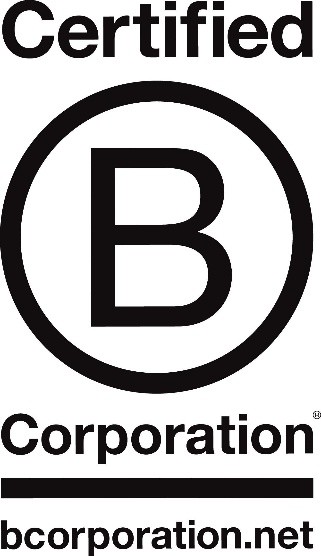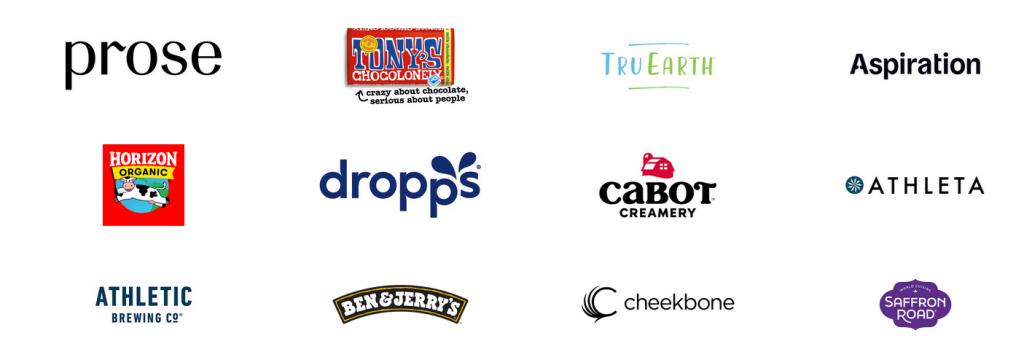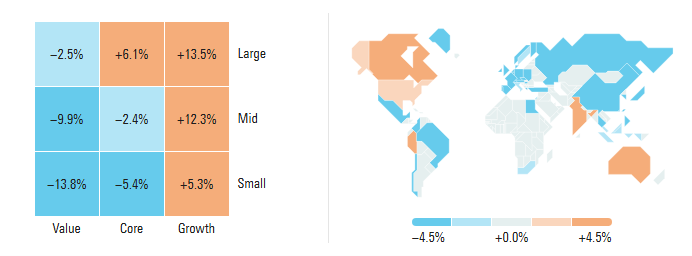Pricey mates,
Welcome to the March subject of Mutual Fund Observer.
I’m stunned, generally, at how a lot I now recognize a few of the stuff that I discovered most senseless and annoying in highschool. (I’m nonetheless not there with Moby Dick; the entire thought of a monomaniacally obsessed previous man main his ship to destruction as a result of he can’t be reasoned with and gained’t again down, simply strikes me as implausible, however I’m prepared to pay attention.)  My secret hope as a professor is that I’m just like the gardener scattering seeds too early, in patches that appear disconsolate, for these seeds nonetheless sprout whither they’d. And so, I educate my college students about Thorstein Veblen, considered one of his age’s most impenetrable geniuses (he coined “conspicuous consumption”), and Sherry Turkle, considered one of our age’s most considerate, who asks “What will we develop into after we speak to machines?” We examine Hitler, and in regards to the disastrous misjudgments – by mainstream politicians who had religion that they might management him and German industrialists who had religion that they might harness him to their eternal revenue – that led to the rise of Hitler. We learn the reflections of the respectable, hardworking Germans who satisfied themselves that it was higher to maintain their heads down and pray.
My secret hope as a professor is that I’m just like the gardener scattering seeds too early, in patches that appear disconsolate, for these seeds nonetheless sprout whither they’d. And so, I educate my college students about Thorstein Veblen, considered one of his age’s most impenetrable geniuses (he coined “conspicuous consumption”), and Sherry Turkle, considered one of our age’s most considerate, who asks “What will we develop into after we speak to machines?” We examine Hitler, and in regards to the disastrous misjudgments – by mainstream politicians who had religion that they might management him and German industrialists who had religion that they might harness him to their eternal revenue – that led to the rise of Hitler. We learn the reflections of the respectable, hardworking Germans who satisfied themselves that it was higher to maintain their heads down and pray.
This separation of presidency from folks, this widening of the hole, happened so steadily and so insensibly, every step disguised (maybe not even deliberately) as a short lived emergency measure or related to true patriotic allegiance or with actual social functions. And all of the crises and reforms (actual reforms, too) so occupied the people who they didn’t see the slow-motion beneath, of the entire course of of presidency rising remoter and remoter. . . (A German professor talking with Milton Mayer, They Thought They Have been Free: The Germans, 1933-45. College of Chicago Press, 1955)
We learn the ultimate report of Herbert Hoover’s 1929 Committee on Latest Financial Modifications that hailed an “virtually insatiable urge for food for items and providers,” and envisaged “a boundless discipline earlier than us … new desires that make method endlessly for newer desires, as quick as they’re glad.”
The youngsters from Nepal and Mongolia learn it alongside the youngsters from Naperville and Milwaukee, learn it very in another way from each other, and communicate to one another with rising confidence about how they hook up with the readings … and join to one another.
And so, within the spring of my 41st yr on the school, I’ll proceed scattering seeds and nurturing hope.
Heck, maybe at some point they’ll replicate on my lessons as I’ve mirrored on Dickens.
“It was the perfect of occasions, it was the worst of occasions, it was the age of knowledge, it was the age of foolishness, it was the epoch of perception, it was the epoch of incredulity, it was the season of sunshine, it was the season of darkness, it was the spring of hope, it was the winter of despair.”
― Charles Dickens, A Story of Two Cities (1859)
On this month’s Observer
Our colleague Lynn Bolin continues bonds as a sexy various, on a risk-adjusted and valuation foundation, to shares simply now. “Spicy Bond Funds” explores “spicier” (higher-yielding) bond investments within the present market surroundings. Lynn analyzes numerous threat components together with inflation, length threat, and coverage uncertainty, and offers a complete rating system for bond funds. Spoiler: you may need to verify Janus Henderson AAA CLO ETF (JAAA) as a comparatively protected approach to obtain larger yields within the present market,
Lynn enhances that with a brand new tackle an previous technique, bond laddering. In “ETF Bond Ladders,” he examines ETFs designed for bond laddering, specializing in merchandise from Invesco (BulletShares) and BlackRock (iShares iBonds). The essay concludes with the word that company BBB-rated bond ladders might be Lynn’s mainstay funding, with potential additions of high-yield bonds for near-term investments and municipal bonds for tax-efficient accounts.
In “The Nice Rotation” (under), I spotlight the shocking extent of the change in inventory buyers’ preferences – small, worth, worldwide, and rising are being rediscovered – and supply up the funds that needs to be on an investor’s shortlist.
To not put too advantageous some extent on it, however the Trump administration has gutted efforts to attenuate world warming, coordinate worldwide responses to it, or keep a reputable info infrastructure for it. In January we famous that the mandatory response to permitting such a collapse was a shift to infrastructure investing to handle the results. In February, we prolonged the evaluation to water infrastructure. In “The Local weather Denial Revenue Paradox,” we replace the state of presidency efforts and lay out extra investing alternatives. (I’ll return to being optimistic in regards to the future subsequent month.)
After markets get pricier and shakier, asset managers are doing what asset managers do: they’re rolling out new merchandise in new asset lessons utilizing new algorithms that assure that completely happy days might be right here once more. After strolling by means of the unhappy wreckage of different “can’t miss” improvements, we spotlight the dangers surrounding three new funds and ETFs in “Liquid Guarantees, Illiquid Actuality.”
All of which delivered to thoughts the beautiful collapse of Firsthand Know-how Worth Fund, a story that continues to this present day. Launched in 1994, the fund returned 60% a yr within the Nineties and gave rise to a half dozen siblings. Twenty years after launch it turned a enterprise growth firm doing non-public fairness investing in the identical types of tech firms. And ten years later, the fund is buying and selling for $0.06/share and isn’t even capable of liquidate. The cautionary story is in “The Rise and Fall of Firsthand Know-how Worth Fund.”
Talking of rising and falling, The Shadow paperwork the demise of Matthews Asian Development & Revenue, a fund made well-known by Paul Matthews and Andrew Foster because the least risky, most constantly glorious approach to spend money on Asia equities from 1994 to about 2011. However thereafter …
The Nice Rotation
We are able to set up two issues in regards to the inventory market with nice confidence:
-
The US inventory market has an enormous downside. “Large” within the sense that buyers have poured cash so steadily and so lengthy right into a handful of leaders that their valuations are starting to redefine “irrational.” Jason Zweig notes, “Even after the stumble in tech shares late final month, the Magnificent Seven traded this week at a median of 43.3 occasions what analysts count on them to earn over the following 12 months” (“What You Ought to Do In regards to the Inventory Market’s Large Downside,” com, 2/7/25).
That leaves a lot of the US market and just about the entire remainder of the world with tolerable valuations. Spencer Jakab studies that “developed-market massive progress shares have been buying and selling final week at 98th-percentile valuations… [meaning] they’ve been dearer solely 2% of the time.” (Ever.) Concurrently, “developed-market massive worth is on the 2nd percentile, so it has been cheaper solely 2% of the time” (“Shares have a giant, costly downside,” WSJ, 2/25/25, B10). Morningstar footage it this fashion:
Leuthold Group studies that small caps are promoting at a 26% low cost to massive caps, adjusted for earnings, and worth is promoting at a near-historic low cost to progress.
-
Traders have seen. As of March 3, 2025, Vanguard Worth ETF is up 4.5% on the yr, Vanguard Development ETF is down 1.2%. Equally, the Vanguard FTSE EM ETF is up 1.6%, Vanguard Complete Worldwide Inventory ETF is up 5.7% and the value-oriented Vanguard Worldwide Excessive Dividend Yield ETF is up 6.6%.
Contrarily, the Roundhill Magnificent Seven ETF is down 6% YTD. Vanguard Mega Cap Development ETF is down 2%. Tesla is down 27% YTD. Google is down 10%. Trump Media & Tech is down 32%.
All of that is separate from broader issues about chaos, tariffs, reciprocal tariffs, escalating tariffs, authorities shutdowns, and burgeoning deficits.
What may an investor think about?
When you’re a younger investor with a diversified portfolio (suppose greater than 50 shares representing many various industries, ideally unfold over a number of nations), do nothing to your portfolio. You’re advantageous. This may be disagreeable, however that’s a part of the worth of taking part in the sport.
When you’re an investor with your entire eggs in a single small basket (you have got a tech ETF and shares of Nvidia, Google, and Amazon), broaden your publicity. That doesn’t imply promoting what you personal. It’d imply including one thing like Invesco S&P 500 Equal Weight ETF (RSP). At base, the equal weight 500 counteracts the massive/progress/momentum biases embedded in lots of portfolios. It provides equal publicity to the most important and smallest firms within the S&P 500 which creates a right away contrarian stability. It’s extra oriented towards cheaper shares, smaller shares, old-economy shares, and dividends than the S&P or the standard portfolio. In Morningstar phrases, it’s a one-star fund which is exactly its attraction: it invests within the firms left for lifeless by the FAANG/MAG7 mania.
If you wish to enhance your publicity to value-oriented shares, think about Knowledge Tree US Worth ETF (WTV) or Goodhaven Fund (GOODX). Why these two? We turned to the MFO Premium screener which permits us to evaluate open-end funds, closed-end funds, and exchange-traded funds side-by-side. We screeners for funds with three important traits:
- Excessive three-year info ratio: The data ratio measures a fund supervisor’s ability by evaluating the surplus returns generated (above a benchmark) to the volatility of these extra returns, indicating how constantly the supervisor outperforms their benchmark. It’s a type of refinement of the Sharpe Ratio. A excessive info ratio is nice; it alerts a better contribution by the supervisor or the mannequin.
- Beneath-average Ulcer Index: The Ulcer Index measures draw back threat by quantifying the depth and length of drawdowns in an funding’s value, giving buyers a clearer image of potential “abdomen ache” than conventional volatility metrics. It’s a key metric in MFO’s fund rankings. Low Ulcer indexes are good; they sign fewer ulcers.
- Out there to common buyers: which is to say, cheap minimal and never restricted to a restricted class of patrons.
We utilized that screener to massive worth, mid-cap worth, and multi-cap worth funds for the previous three years. Thirty-four worth funds and ETFs confirmed each glorious supervisor efficiency and glorious resilience over the previous three years. Knowledge Tree US Worth had the best info ratio of all, and Goodhaven had the best ratio for all mutual funds.
| Annual return | Information Ratio | Ulcer Index | ||
| Knowledge Tree US Worth | Multi-cap worth | 14.1 | 2.02 | 5.3 |
| Goodhaven | Multi-cap worth | 14.6 | 1.44 | 5.3 |
| MCV common | 8.4 | -0.02 | 5.6 |
If you wish to enhance your publicity to small cap shares, think about Vanguard Strategic Small Cap Fairness, North Sq. Dynamic Small Cap, or Adirondack Small Cap.
Vanguard Strategic Small Cap Fairness is an actively managed, low-cost small-cap mix fund that holds about 500 names (yikes! But it surely works) with a growth-at-a-reasonable-price self-discipline. It prices one-third of the class common and is about as diversified as could be.
North Sq. Dynamic Small Cap employs a scientific, quantitative strategy to determine behavioral inefficiencies in small-cap fairness markets, leveraging subtle information science to take advantage of pricing dislocations attributable to investor biases. That “behavioral finance” angle is pretty distinctive.
Adirondack Small Cap is the top-performing small worth fund, incomes a exceptional 11% annual return in one of many market’s left-for-dead classes. The fund focuses on figuring out undervalued small-cap firms which have fallen out of favor with buyers, looking for to capitalize on these “turnaround conditions” earlier than mainstream buyers take discover. They aim firms that may rebound inside three years. The group has been round endlessly and is closely invested within the fund.
| Annual return | Information Ratio | Ulcer Index | ||
| Vanguard Strategic SC | Small cap core | 7.9 | 1.68 | 7.0 |
| North Sq. Dynamic SC | Small cap core | 9.5 | 1.64 | 7.2 |
| SCC Common | -3.9 | 7.9 | ||
| Adirondack SC | Small cap worth | 11.1 | 1.14 | 5.8 |
| SCV Common | 4.9 | -0.02 | 7.4 |
If you wish to enhance your publicity to worldwide shares, think about the Janus Henderson International Analysis or Moerus Worldwide Worth. The Janus Henderson International Analysis is a worldwide large-cap progress fund that employs a particular sector-driven strategy the place specialised groups of devoted sector analysts construct high-conviction portfolios of their finest concepts worldwide. In addition they work to hedge away most macroeconomic dangers leaving the portfolio efficiency principally pushed by inventory choice.
Moerus Worldwide Worth is a globally unconstrained deep worth fund managed by Amit Wadhwaney, who employs a disciplined strategy to figuring out firms buying and selling at important reductions to intrinsic worth throughout developed and rising markets, with a specific emphasis on sturdy stability sheets over earnings statements. Amit has three many years of worth investing expertise and willingness to embrace market turmoil as a possibility, looking for out underfollowed companies, advanced conditions, and quickly distressed sectors that the majority buyers keep away from, creating a particular portfolio of 30-40 high-conviction holdings with minimal index overlap.
| Annual return | Information Ratio | Ulcer Index | ||
| Janus Henderson International Analysis | International massive cap progress | 12.64 | 0.89 | 7.41 |
| International LCG ave | 8.8 | -0.33 | 8.98 | |
| Moerus Worldwide Worth | International small-mid cap | 15.65 | 1.71 | 6.09 |
| International small ave | 2.6 | -0.60 | 6.22 |
And should you’re merely freaked out, (a) welcome to the membership and (b) enhance the strategic money allocation in your portfolio. Money and money options are paying 4-5% a yr with minimal draw back. When you don’t have any nice conviction in threat belongings, take a deep breath and spend money on some variation of an ultra-short bond fund or cash market.
| Annual return | Most drawdown | Information Ratio | Ulcer Index | ||
| CrossingBridge Extremely-Brief | Bond | 4.89 | -0.12% | 1.37 | 0.03 |
| Constancy Conservative Revenue | Extremely-short bond | 4.43 | -0.21 | 0.8 | 0.06 |
| Random cash market fund | The group common | 4.24 | 0.0 | -0.95 | 0.0 |
CrossingBridge is run by David Sherman & co., they usually have an excellent document of low-risk earnings investing. Constancy Conservative Revenue is an inexpensive, lively, middle-of-the-road ultra-short bond fund. The “low-cost” is de facto helpful right here. We’ve additionally included the profile of the cash market peer group. In actuality, there’s no draw back to any of them and treasured little upside deviation. So, the entire group sits at 4.2% give-or-take 0.2%. Choose whichever one is handy to you should you don’t need the prospect of including only a little bit of upside with CrossingBridge or Fido.
The underside line: operating round in panic just isn’t your buddy. Hiding just isn’t your buddy. Taking a deep breath and making rational changes is. We’ll assist.
Celebrating Moral Enterprise: B Corp Month
 March has been designated as “B Corp Month.” Hallmark has not but taken discover.
March has been designated as “B Corp Month.” Hallmark has not but taken discover.
In an period of rising disillusionment with conventional company constructions, B Corps stand as beacons of a extra conscientious strategy to enterprise. Whereas many firms prioritize income at any value, Profit Companies (B Corps) signify a revolutionary paradigm that balances monetary success with optimistic social and environmental influence.
B Corps are companies that meet rigorous requirements of social and environmental efficiency, accountability, and transparency. Not like typical companies that reply primarily to shareholders, B Corps legally decide to contemplating all stakeholders: staff, clients, suppliers, group, and the surroundings. Within the US, 2,400 companies are organized as B Corps. Worldwide, that swells to 9,500.
 What makes B Corps price celebrating? They’re proving that enterprise is usually a drive for good. From truthful wages and various workforces to sustainable sourcing and moral manufacturing, these firms reveal that revenue and goal aren’t mutually unique, they’re mutually reinforcing.
What makes B Corps price celebrating? They’re proving that enterprise is usually a drive for good. From truthful wages and various workforces to sustainable sourcing and moral manufacturing, these firms reveal that revenue and goal aren’t mutually unique, they’re mutually reinforcing.
The B Corp motion isn’t simply idealism; it’s pragmatism for our occasions. As customers more and more vote with their {dollars} for firms that replicate their values, B Corps are displaying that moral enterprise practices create resilience, innovation, and long-term success. The Annual Report of B Lab paperwork a whole lot of methods by which these firms actually are totally different.
I’m not stunned, although I’m barely appalled, by the pace with which Company America as an entire has thrown all rules besides shareholder (and government) features beneath the bus. By supporting the nice guys, you aren’t underwriting the swift abandonment of workers, communities, and the surroundings by the billionaire-dollar companies that have been cheerleading for it, flying rainbow flags, and signing on to world initiatives … for exactly so long as it was handy.
Assist how?? Comply with B Lab International, the certifying physique, on social media (LinkedIn, Instagram, Fb, X) and comply with the #GenB or #BCorpMonth hashtag to see the totally different stuff occurring all through March. You too can use the ‘Discover a B Corp’ listing to find companies which can be a part of the group and use your buying energy to assist B Corp firms, and the motion of enterprise as a drive for good.
And different good guys
![]() You may also think about Bookshop.org as an moral various to Amazon, a minimum of as a bookseller. They’ve donated $36+ million in income to native bookshops since their launch throughout Covid. Good folks, sensible choice. Amazon has just lately modified coverage, they now forbid Kindle customers from downloading their books, giving them everlasting management of your purchases. (You may recall their freakish choice to take away the guide 1984 from all Kindle readers a number of years in the past.) Bookshop has e-books and is working with of us like Kobo to make them out there on readers.
You may also think about Bookshop.org as an moral various to Amazon, a minimum of as a bookseller. They’ve donated $36+ million in income to native bookshops since their launch throughout Covid. Good folks, sensible choice. Amazon has just lately modified coverage, they now forbid Kindle customers from downloading their books, giving them everlasting management of your purchases. (You may recall their freakish choice to take away the guide 1984 from all Kindle readers a number of years in the past.) Bookshop has e-books and is working with of us like Kobo to make them out there on readers.
Equally, a handful of main retailers have acknowledged the enterprise case of sustaining a various and vibrant workforce and have, up to now, refused to roll again company efforts to assist their workers. These embody Costco, Crate & Barrel, House Depot, Ikea, Kroger, Sprouts Wayfair, West Elm … and Entire Meals (?).
Thanks, as ever …
 To our devoted “subscribers,” Wilson, S&F Funding Advisors, Greg, William, William, Stephen, Brian, David, and Doug, thanks!
To our devoted “subscribers,” Wilson, S&F Funding Advisors, Greg, William, William, Stephen, Brian, David, and Doug, thanks!
To, Sara from Brooklyn, Charles of Michigan, Ronald from Alexandria, Marjorie (thanks, ma’am, I additionally get such a headache some days) of Chicago, The Grinch Redux, and pricey Binod from Houston, thanks! And for extra than simply monetary assist. You make a distinction.
It’s planting time. Chip is busily looking out seed catalogs for spring-planted garlic (stiff neck principally, as a result of they generate scrumptious garlic scapes) and delicate onions. I’ll proceed trying to find the proper potato. And someplace in there, extra native wildflowers and grass (sheep fescue appears cool) will proceed their relentless incursion on our garden.
Planting is an act of hope. Gardening is a gesture of resilience. Pursue each, pricey mates.
As ever,




